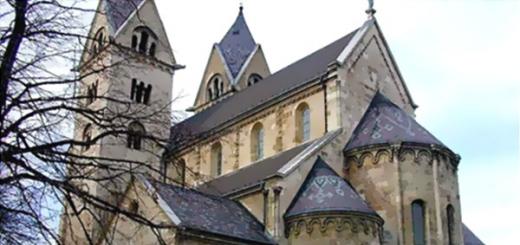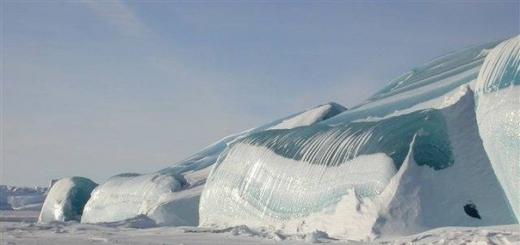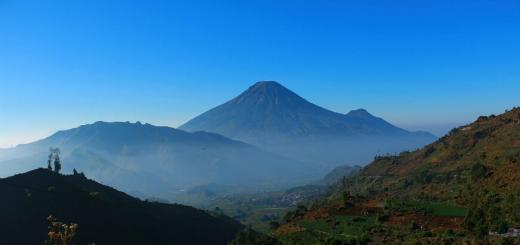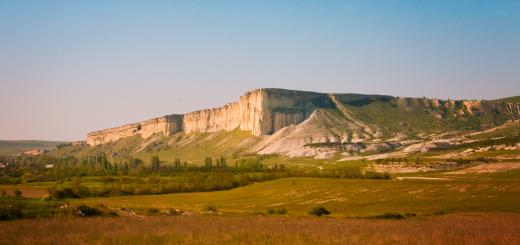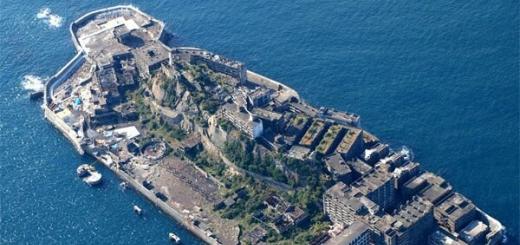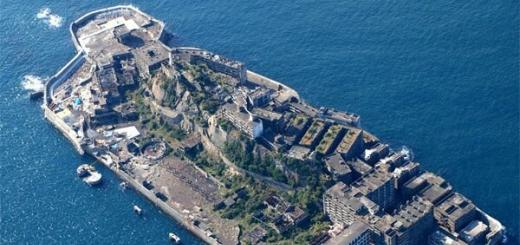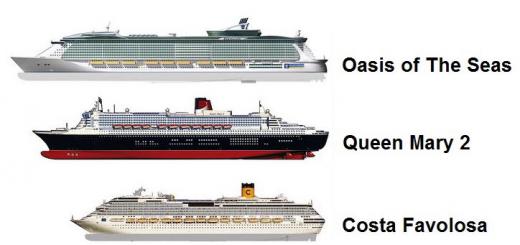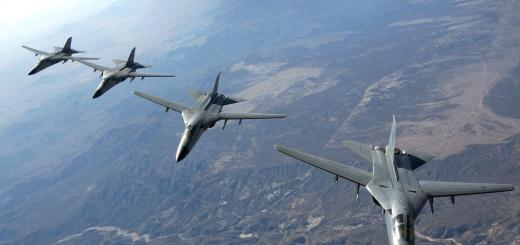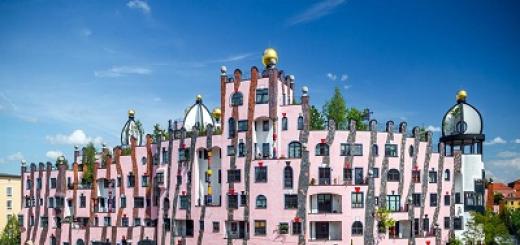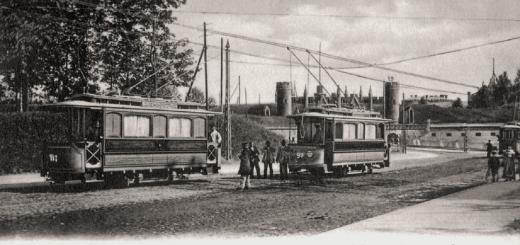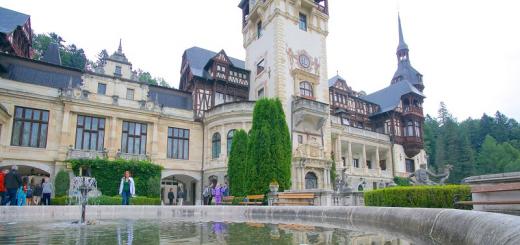March 29, 2016 19:34 Central Java, East Java, Yogyakarta - Indonesia May 2014
1
What do we know about the island of Java, what is Java for us? Tea "Princess Java", once popular motorcycle "Java"? For people who know enough about Indonesia, this may seem like an inappropriate joke, but for those who are just getting to know the country, you can make a start from these associations. The Javanese really cannot live without tea, it is brewed very strong, and then diluted with water, the raw materials for such tea are of course local - there are several regions with tea plantations on the island. And the princess was also not invented by the creators of the trademark - in Java at different times there were dozens of palaces with their kings, princes and princesses. And the motorcycle ... that's a bearded joke.
And so, the island of Java for the tourist-traveler is a chance to touch the Indonesian reality as it is. These are difficulties with transport and beautiful unspoiled beaches, these are good-natured, open, sometimes first-time residents of foreigners,
1

but also difficulties in understanding with them, since very few people in Java know English or other languages other than local languages (Indonesian Javanese).
Java is a land that preserves the memory of ancient civilizations, a land where people still live, keeping the traditions of Javanese palaces and their unique types of arts, this is a land of wild nature (jungle, rocky beaches, active volcanoes, waterfalls, turbulent rivers). This is a place where everyone who is looking for new experiences should definitely go.
General description.
Java is primarily a geographical name, one of the islands of the Greater Sunda Islands group. Its territory is 132,000 km², with a population of 140 million, it is the most densely populated island in the world. True, in Java, sometimes it seems that the ridge of houses along the road does not end. In addition to the island of Java, this is also a historical region, the land of residence of the Javanese, covers the provinces of Central Java, East Java, Yogyakarta. Not the news, the island is inhabited by Javanese, Sundans and Madurtsi (of the most numerous ethnic groups) also live on it. In this brief overview of Java, I will focus on the central and eastern part of the island, where the largest number of places worth visiting (speaking of "Java" I will mean this particular part of the island).
Public transport(transpoprtasi umum)

Air(plane-pesawat, airport-bandara)
Java has 4 international airports, and a few more serving domestic flights only. Semarang, Yogyakarat, Surabaya equally suitable for entering Java from across the Indonesian border. There is also an airport of the city Surakarta, but it serves far fewer international flights than the ones mentioned above. In any case, most often tourists arrive in Yogyakarta to find themselves close to the famous temples of Borobudur and Prambanan. Surabaya is convenient if you want to go straight to the Bromo and Ijen volcanoes. Semarang and Surakarta can be used as alternative airports.

Sugeng rawuh-welcome, in Javanese.
1

There are two more large international airports in West Java: Jakarta and Bandung... Jakarta is second to none in Indonesia and is the world's most congested airport. From here, you can very easily pick up a flight to anywhere in Indonesia. As for domestic airports in Java, among them, in addition to those listed, is also important Malang.
Railroad(train-kereta api, railway station-stasiun kereta api)

Java is the only island in Indonesia where trains are comfortable to travel and cover most of the island's territory. Compared to buses, trains are significantly faster. If, say, a bus travels from Yogyakarta to Probolinggo for 10-13 hours, then train-8. For this reason, train tickets run out quickly and are worth buying in advance. Speaking about possible directions, I advise first of all to remember about trains and check the possibility of getting to your destination by train. There are economy, business and executive class cars in different directions. Economy class is like a comfortable train with soft seats. All the way you will sit on a soft bench with two or one more passengers. It is much more comfortable to travel in business and executive class carriages. There you will be seated in separate large chairs. All carriages on long-distance trains are air-conditioned - it will not be hot, rather prepare a sweater so as not to freeze. These trains sell tea and a standard lunch set, which is quite fashionable to consider as an option not to stay hungry during the 8-10 hour journey.
Buses... (bus-bis, bus station-terminal bis)
3

Buses in Java are a special story. They go fast, but with one caveat - how quickly the traffic congestion allows ... and the roads in Java are not wide ... But if you do not have the opportunity to use the plane or train, then you should not be afraid of buses, you just need to choose them wisely. Bus fares are the first thing you should pay attention to - there are cheap ones, and there are very cheap ones. If we are talking about distances from 100 km (or flights that follow a route of 100 km or more), then all buses must be air-conditioned and it is forbidden to smoke in them (yes, in small old buses all windows and both doors are open, you can smoke there. Java, real Java). For long distances, you can go in economy class, or you can go in business class. Speaking about prices, I will give an example, 100 km from Surakarta to Semarang in economy class cost about $ 2, business class - $ 4-5. It is best to leave the bus stations, but all buses, even the largest and business class ones, stop on the road along the route. Local people usually know the places where buses stop in the direction you want. It is enough just to name the city of your destination.
Public buses of varying degrees of comfort run in many cities. In big cities like Jogjakarta, Semarang, Surabaya, they are more comfortable and walk more often, but in small cities there is practically no need to rely on them. Even in big cities, they run up to a maximum of 8 pm and cover a small part of the city.
Ferries, ships(ferry-kapal ferry, boat-perahu)
The only ferry. Which arrives in Java from other islands, runs along the route Bali (port of Gili Manuk) -Java (port of Ketapang). This is a very popular way for travelers to get to Java or Bali, respectively. For a ridiculous $ 0.6 you will get on a ferry that will dock to a neighboring island in an hour and a half. The ferry can transport a car (in general, bus-bus routes from Java to Bali or to other Lesser Sunda Islands also use this crossing).
When traveling in Java and the small neighboring islands, you can use ferries or speed boats. For example, if you want to visit a not very popular, but paradise place with amazing Karimunjava beaches, then the cheapest way is to take a ferry in the city of Japara and for $ 5 get on a ferry that will take you to the Karimunjava archipelago in 5 hours. Ferries also run between Java and Madura Island, connecting several ports. These ferries are more likely to serve the local population, but sometimes especially curious tourists get there, far from tourist places.
Moto and cycle rickshaws, motorcycle taxis(pedicab-becak, motorcycle taxi-ojek)
In Java, the traditional form of transport, rickshaw, is still preserved. In cities and towns, people still actively use the services of such transport. Of course it's fun and interesting to ride a rickshaw. The fare ranges from 10 to 100 thousand, depending on the distance. You are unlikely to pay more than 100 thousand because drivers often simply refuse to drive if the destination is very far away (pedaling with a load of 2 people is not an easy thing), but be careful because drivers like to inflate prices for tourists: do not pay more than 25 thousand for the distance you would walk in an hour.

Another exotic form of transport for us is very popular in Indonesia - motorcycle taxi. At any car and railway station, you will be surely attacked with sentences "ojek, becak". We have already figured out the Bechaks above, but what about the Ojeks. This transport shouldn't cost more than the Bechak, but it is faster. If you speak Indonesian, you can download the Gojek smartphone app - it's like an Uber taxi, but instead of a taxi, motorbikes are generally very convenient as motorcycles are more maneuverable and less stuck in traffic than cars; ordinary taxi.
Transport rental.(car-mobil, motorcycle-scooter-motor)
In some cities in Java, you can rent a scooter or car. It will not be difficult to do this in Yogyakarta. In other cities and regions, renting a car is easier than a moped, but most likely you will be offered to rent a car by paying the driver's service and gasoline costs. The cost of renting a moped for a day in Jogjakart is about $ 5, a car from $ 30 per day.
Money and prices. (money-uang, price-harga, how much is-berapa harganya)

In the photo about $ 4,000 or 60,000,000 rupees
As in all of Indonesia, the Indonesian rupee is used in Java, its approximate rate is $ 1 -13000, but all the visitors are happy that by changing $ 100 you become a millionaire. With regard to withdrawing money from bank cards and exchanging foreign currency, it is worth making a few remarks. If you want to change dollars, then you should have 50 and 100 bills with you for them, you will get the highest rate, 20.10, 5 bills are accepted at an undervalued rate. It is also important which series of your banknotes-bills printed earlier than 1996 does not change, nowhere and in any way. ATMs from various Indonesian banks can be found even in the most remote areas. From my own experience and from the stories of others, I know that the least problems occur when withdrawing from bank CIMB NIAGA bank. All ATMs in Indonesia have a limit on withdrawing cash per transaction - sometimes 12,500,000, sometimes 1,500,000 rupees, CIMB has 1,500,000.
How to communicate with people / Internet to help
Most Javanese do not speak English, but almost all speak Indonesian (the national language of Indonesia)

and a few phrases in Indlnesian are very useful, say, in the market or when searching for transport.
Prices in the market and in souvenir shops for foreigners are, of course, overstated. Sometimes they are slightly overestimated, sometimes even three times. To get a price close to the original price is worth the time and of course it is better to do it with at least some amount of Indonesian words. The ability to communicate with gestures is a universal skill, but very often Javanese do not know how to count in English, what kind of fruits are called, or what else you need ... it is best to download a couple of useful applications to your phone, at the same time I strongly advise you to buy a local sim card and 3G Internet will always be at hand.
Of the mobile providers that provide 3G mobile Internet, I advise simPati / Telcomcell, having bought a SIM card at a price of about $ 10, with a 2GB Internet reserve for a month, you will use a network with the best coverage among all possible operators.
It seems to me very important to point out one feature of the Javanese that distinguishes them from the inhabitants of the post-Soviet space. Yavantsi are very gentle people by nature (like all generalizations, this does not pretend to be universal), they are not used to being at knives, even bargaining at the bazaar or solving a conflict situation. If it seems to you that their service is not of high quality or they are trying to deceive you, you should not attack them, the only thing you will achieve is breaking the contact, they will close like snails and you are unlikely to achieve anything. Balance helps to resolve the issue in your favor, rather a request than a demand, rather a smile than a grin, even demanding a refund for poor service, it is better to smile and put pressure on the self-esteem of this person than to accuse him and threaten him with violence.
Java is the most populous and diverse island in Indonesia. He took a little bit from different parts of this country, which allows a tourist to collect a lot of impressions and experience a wide variety of emotions in a short time. Java excites, relaxes, amuses, but leaves no one indifferent. Here, large-scale plains and terraces used in agriculture border bustling cities and muddy villages. The island has very beautiful temples, huge stone Buddhas, mosques, ancient armories and unusual architecture of the colonial era. Numerous stories are not able to convey emotions fully, but they can spur the interest of future travelers.
Geographic features
Java is a large island in the Greater Sunda Islands. The capital of Indonesia, Jakarta, is located here. The area of the island is 132 thousand km². It is very densely populated with more than 140 million inhabitants. The island is elongated and almost parallel to the equator. A third of the territory is occupied by dense jungle of mangrove forests. Ridges of mountains stretch along the entire island from west to east, among them you can find 120 dormant and active volcanic craters. The highest point is located at the peak of the Semeru volcano, 3676 m high. More than a quarter of volcanoes are constantly active. This is not always accompanied by destruction and lava flows, some craters simply release a small trickle of steam several times a year. Major eruptions occur every seven years.
Java's surface is dotted with rivers that feed vast fields and serve as a source of drinking water. The largest channels are Solo, Chimanuk, Brantas.
Climate
Java is located in the tropical zone, the weather is unchanged throughout the year. The climate on the island is humid and hot, the air temperature is between + 26 ... + 29 ° C, and its humidity is 75-95%. The greatest amount of precipitation occurs in November-February, but even at this time you should not give up your trip. Prolonged rains and prolonged cloudy weather do not happen. All moisture falls to the ground in 1-3 hours. The average rainfall for the island is 1100 mm per year. Moreover, in the east this figure is 900 mm, and in the west it reaches 3000 mm.
Population and religion
The inhabitants of the island are divided into three main ethnic groups:
- Javanese;
- Sudanese;
- Madurians.
In terms of religious composition, Muslims predominate in Java (87%), there are also Protestants, Catholics, Buddhists and Hindus. However, in its pure form, none of these religions can be found here. They are very closely intertwined with each other and with ancient animistic beliefs. Thus, Muslims partially perform the rituals of Buddhism or Hinduism. Some temple buildings contain a Hindu-style base and a Buddhist top and roof. Some mosques have Hindu roofs.
Kitchen
On the island, as in most tropical countries, a huge amount of fruit is sold. Their prices are quite reasonable. Local cuisine is considered to be the most Europeanized, so you won't find much exotic here. The dishes use spicy rice, beef, legumes, vegetables and chicken. Popular drinks include ginger tea, coffee, cane juice, Tuak beer, and Arak vodka.
Unique Jakarta
The largest and most interesting city is the capital Jakarta. It is very diverse and densely populated. Here, a variety of buildings, including the era of the colonists, mixed with local neighborhoods near picturesque canals. Several unusual buildings are located on the central square, approaching close to the waterways of the city. There are expositions of the historical museum nearby. A little further there is the Wayang doll exhibition, the Chinese area, the temple and the port.
To continue your acquaintance with the sights of Jakarta, you will have to go to the second city center (Medan-Murdek Square). There is a huge monument and a museum with the largest historical and ethnic collections.
Those wishing to take a break from historical excursions should go to the south, where several entertainment and educational parks are located at once:
- Jaya Ankol Park;
- Water Palace;
- Ragunan Zoo;
- entertainment center Taman-Ismail-Marzuki;
- Taman-Mini miniature park;
sights
The hearts and minds of travelers who have left Jakarta's borders are conquered by no less striking sights. The most monumental, striking in its size, is the Borobudur complex of temples. It is listed as a UNESCO heritage and is the basis of the cosmopolitan Buddhist model. Travelers and pilgrims begin their journey in Borobudur from the base of the hill along a long, winding staircase. It offers beautiful views of the terraces and buildings.
Many tourists are attracted by the "Valley of the Kings" - a plain covered with ruins, in the center of which there is another temple complex - Paramban. This historic site is recognized as the finest on the island.
The Javanese themselves honor and offer tourists to admire the Sultan's palace in Yogyart - Kraton. They call it "the navel of the world." Visitors can see how the life of the Sultan was organized, the furnishings of the rooms, adjacent buildings. In accordance with the preferences of the sultan, there are many elements of animism and Hinduism in the setting.
For lovers of natural parks in Surabaya, there are two nature reserves at once, which have collected 200 species of orchids, many birds and animals.
From here, excursions to the active volcano Bromo begin, from the upper hills of which you can look into the constantly smoking vent.
Beaches
Java is a cluster of industry and cultural attractions. Beach infrastructure has begun to develop here over the last decade. The most suitable for a beach holiday are the southern and western parts of the island. People come here to swim, sunbathe, dive and windsurf. The beaches are very wide, covered with fine white sand with islands of palm trees. They are washed by transparent azure waves.
The most prestigious beaches are located near Badung: Karang Bolonga Anyer. A mountain panorama appears before the gaze of vacationers on the Asnieres beach, and there is also an old lighthouse nearby. From entertainment on the territory are offered water skiing, parasailing, boat trips.
In the western part of Java, on Tanjung Lesung Beach, there are many resort complexes with private beaches, among which there is also a paid public area. All beaches are well equipped.
Lovers of privacy and tranquility will love the Karita beach. It is quiet enough, protected from strong tides and waves. The area is popular with tourists with children and snorkelling enthusiasts. Not far from the coast, there are colorful fish and small corals. From the beach you can admire the panorama of the Krakatoa volcano, which is beautiful in the midday sun and in the rays of sunset. Most vacationers take great pictures from here.
How to get there?
A large international airport is located in the capital of Indonesia - Jakarta. There are flights from Moscow to Jakarta with a transfer in Singapore, Kuala Lumpur, Bangkok or other large cities. Among the offers of airlines, you can choose the one that is suitable for the price, duration of flights or the number of transfers. Inland, there are flights from Jakarta to Surabaya or Yogyakarta. The flight duration is about an hour.
To visit Indonesia, citizens of the Russian Federation just need to apply for a visa for 30 days according to a simplified scheme upon arrival or in advance at the consulate. You will need a photo and a passport, the validity of which is at least 6 months longer than the end date of the trip.
Java island on the map of Indonesia
Java island map detailed
Tourist map of Central Java

Tourist map of West Java

Tourist map of East Java

Java Map
Java on the world map is located in the Java Sea, which washes its northern coast. From the south, the island has access to the Indian Ocean. As the geographical map of Java will show, the length of the island from west to east is almost a thousand kilometers. It is the largest island in Indonesia and is home to the country's capital, Jakarta.
Any map of Java will demonstrate that about a third of its territory is occupied by rainforests and jungles. The island is administratively divided into six regions. Java detailed map contains provinces such as Banten, West Java, Central Java, East Java, Jakarta and Yogyakarta districts.
Natural attractions are represented on the island by nature reserves and numerous volcanoes. A map of Java in Russian will help you find the most famous hills of Krakatoa and Mont Brom. It is noteworthy that the last time Krkatau, located not on the island itself, but between it and Sumatra, erupted in 2008.
A map of Java with attractions from Arrivo will help you to compose the best route and find all the interesting places of the island.
sights
Guide
Java is the most famous island in the Greater Sunda Islands. It is located near Sumatra and attracts thousands of tourists every year. Rich culture, unique flora and fauna, specificity of local color, authentic atmosphere - all this makes the island especially popular among visitors.
There are several options for interpreting the name of the island. The first says that the word "Java" is translated from the ancient Indonesian language as "dwelling". According to another variant, the name of the island comes from the Sanskrit word "barley". Until now, researchers cannot determine the exact meaning of the name.
By its origin, Java belongs to both mainland and volcanic natural objects. The island's landscape is based on a long mountain range stretching along the central part. Along the entire mountain range, there are more than 110 volcanoes of various sizes. At the same time, the highest point is the Semeru volcano, which is still active. In addition, there are many water areas on the island.
Archaeological excavations indicate that the first man set foot on the island's land in the second century BC. In the third century AD, urban settlements were formed in Java and statehood appeared. One of the most prosperous states was called Mataram and existed for many years.
At the end of the 13th century, Java was ruled by Kublai Khan, who created a great empire on the island. It existed for over 200 years, after which it disintegrated. In the 17th century, the island was occupied by the Dutch, under whose influence many European colonies appeared in Java. However, after World War II, the island became part of the independent state of Indonesia.
How to get there

The fastest and most convenient way to get to Java from Russia is by plane. Soekarno-Hatta International Airport receives dozens of flights every day from different parts of the world. Aircraft of such air carriers as Emirates, Qatar Airways, Singapur Airlines, Thai Airways operate from large Russian cities to Jakarta. At the same time, you will spend from 17 to 22 hours on the flight and make a transfer in Singapore, Dubai, Bangkok or Doha.
It is better to buy tickets in advance, as travel to Java is in demand all year round. In order to find a cheaper option, regularly monitor the offers of airlines and watch for price changes.
If you are already in Indonesia, then you can try to get to Java by ferry. The Pelni company provides tourists with the opportunity to ride a ferry. However, take into account the fact that ferries do not differ in an increased level of comfort and the lack of free seats is the main problem of this type of transport. A ferry ticket is bought either at the box office at the pier, or on a specialized website.
Railroad is another way to get to Java. The railway service connects the cities of Jakarta, Semarang, Surakarta, Bandung, Jogdzhu. When purchasing a ticket, pay attention to the class of the carriage. All three of them. The first class involves traveling in a comfortable compartment and air conditioning, the second class is a seating area, and the third is a wooden bench.
Features of the hotel base

The choice of accommodation in Java is huge, from guesthouses to five-star hotels. There are several options that suit different categories of tourists: apartments; hostels; bungalow; hotels.
Couples and large companies often choose to rent apartments or guesthouses. Such housing will be inexpensive, and its size will pleasantly surprise you. Guesthouses, as a rule, are located in the sleeping areas of the island. The price of the apartment includes a standard set of services: bedding, kitchen and bathroom accessories, a parking space, free internet, a sitting area in the garden. You can also rent cozy bungalows on the coast with beautiful views of the surrounding landscape.
Hostel accommodation is geared towards students or solo travelers. This type of housing in Java is considered to be very inexpensive and clean. Recently, hostels have begun to be built in every district. The cost of the room depends on the location, conditions and occupancy.
As for hotels, you won't have any problems finding them. Hotels are traditionally divided into different categories and differ in cost. The most expensive ones are in the central part of the island, and the cheapest ones are on the outskirts. A special system of discounts has been developed for tourists, which allows them to book rooms at an affordable price.
sights

A few kilometers from Surabaya, there is a rare national park called Bromo-Tenger-Semeru. On an area of over 750 square meters, there are forests, volcanoes, waterfalls with their own unique ecosystem. Visitors note the unusual nature of the park's landscapes, since most of it is covered with volcanic sand. Thousands of years ago, tribes lived on the territory of the park, from which this natural site received its name. The pearl of Bromo-Tenger-Semeru is the five volcanoes. They are close to each other, and their appearance is shrouded in legends. According to one of them, if you go up to the crater of the volcano, then there you can see the entrance to the afterlife. Thanks to this legend, the popularity of the park is growing every day, as many tourists want to reach the top of mystical volcanoes.
Be sure to visit the Borobudur temple complex, located 35 kilometers from Jakarta. Scientists still disagree about the date and authors of this architectural artifact. For a long time, the shrine could not be found due to the fact that it was hidden in the dense thickets of the jungle. After the discovery of this amazing masterpiece, tourists rushed to it in order to get better acquainted with the traditional culture of the island. Presumably, the complex was built in the 8-9 centuries.
Connoisseurs of large-scale architectural projects will love the Taman Sari Water Palace, founded by one of the rulers of Java in the 18th century. The complex is formed by the premises of the palace, fountains, a lake, rest rooms and picturesque places for meditation. A large amount of money was allocated from the local budget for the palace, which made it possible to create a masterpiece of incredible beauty and harmony.
If you want to get a closer look at the nature of Java, then visit the Bogor Botanical Garden. It is considered one of the largest in Indonesia and is known outside the country. The area of the garden is 88 hectares, where more than 14,000 plants from different parts of the world grow. The garden has the largest collection of orchids. They are located in special greenhouses and delight visitors all year round.
Beach vacation

The pride of the island of Java is its magnificent beaches, stretching for several kilometers. All beaches are united into tourist zones, which differ slightly from each other. The difference is only in the level of infrastructure and features of the surrounding landscape.
Couples with children strive to get to Karita beach, where there are all conditions for a quiet pastime, as well as diving or snorkeling. There is a separate area for children on the beach with buoys, rescue posts and playrooms. In addition, the coastline of the beach is covered with fine sand, and the entrance to the water is comfortable and gentle. While resting on Carita, you can enjoy the view of the majestic Krakatoa volcano.
Be sure to include a visit to Panaitan Island with its beautiful beaches in your excursion program. You can come to the island only with the permission of the local authorities, since its territory is considered closed to outsiders.
The western part of Java is famous for its resort of Asnier. Here you will find an abundance of restaurants, beaches, hotels for every taste. Also on Asnieres there is an old lighthouse built by Dutch colonists. Hundreds of tourists come to see it every year.
Exotic lovers should go to Plengkung Beach, which is famous for hosting surfing competitions on its territory. Waves here reach heights of 2-6 meters, which is ideal for professional surfers. Competitions have international status and participation in them is considered very prestigious.
If you want to surprise the kids, then head to Sukamade Beach. A fascinating sight awaits you here: hundreds of little turtles hatch from eggs and strive for the water surface. Also on the beach you can swim and enjoy the amazing views of the sunset. The only disadvantage of Sukamade is the lack of mobile communications and the Internet.
What to bring

Java's shops and markets are overflowing with original products that tourists often buy for family and friends. A wide range is presented in the capital of the island, however, in small resorts you can find what to bring with you. Of the most popular things that come from Java:
- wooden masks for celebrations or ritual activities;
- genuine leather goods;
- caskets and jewelry covered with mother-of-pearl;
- items made of porcelain, pewter, stone, silver;
- dolls made in the national technique;
- umbrellas, rattan bags, paintings, panels;
- unusual ceramic dishes with traditional painting;
- fabrics made using a special technique;
- sandalwood figurines and figurines.
At local markets, tourists often buy aromatic spices, sweets, jasmine petal tea, soy milk and other unusual products.
The most famous and one of the most expensive types of coffee, Kopi Luwak, is exported from Java. The peculiarities of its production were created not by man, but by nature itself: a small musang animal from the vivver family eats the fruits of coffee trees, and people only have to collect the grains that have passed through the musang digestive system.
In the insular Republic of Indonesia, there is the island of Java, which has become the world record holder for population. On the world map, it is located in Southeast Asia. The island of Java is covered with tropical forests, which are adjacent to the stone jungle of the capital of Indonesia - Jakarta.
The island is located in the center of the Indonesian archipelago in Southeast Asia. On the map, it is located between Eurasia and Australia, next to the island of Sumatra, which is located just north of Java. On the south side, the island is adjacent to the smaller Sunda Islands and Bali, and on the east - the islands of Sulawesi and Malaysia.
Java island on the world map has coordinates:
- Geographic: 7 ° 17'56 "S, 109 ° 56'06" E.
- Decimal degrees: longitude -7.298904; latitude 109.942516.
Height above sea level 3675 m.
Island length and width, area and shape
The island stretches for 1 thousand km in the west-east direction, and is 205 km wide. Its area is about 130 thousand km 2, of which 44 thousand km 2 are covered with tropical forests and impenetrable jungle.
The island has an oblong shape, similar to a horizontal boot. The shores of Java are washed by the Indian and Pacific Oceans, and from the north by the Java Sea. Java is separated from Sumatra by the Sunda Bay.
A significant part of the island's territory is occupied by 120 volcanoes, 30 of which are considered active. The island also has a large number of rivers. But the main source of fresh water is the Solo river bed.
The island's territory is divided into:
- western;
- eastern;
- central.
How to get to the island?
There are several ways to get to the island.
By plane
There are 6 international airports on the island of Java. The largest of these is Soekarno-Hatta in Jakarta, which receives large-capacity airliners and is also used for transfers within the country.
 You can get to Java by plane from Jakarta.
You can get to Java by plane from Jakarta. The remaining 5 air terminals near the cities of Bandung, Yogyakarta, Surakarta, Jativangi and Surabaya are connected only with the city of Kuala Lumpur in Malaysia and international airports in Thailand. The island of Java can also be reached from the city of Moscow.
Several airlines operate flights to the city of Jakarta:
| Airline name | Transfer | Final destination | Frequency of flights per day |
| Qatar airway | Doha | Kuala Lumpur | 1-2 |
| Thai airway | Bangkok | Jakarta | 1 |
| Singapur airline | Singapore | Surabaya | 2 |
| Emirates | Dubai | Jakarta | 1 |
On average, any flight takes at least 20 hours.
On the ferry of the national shipping company "Pelni"
This type of travel can be used to get to Java from other islands:
- Bali;
- Sulawesi;
- Sumatra.

Ports in Java are located in cities:
- Jakarta;
- Surabaya;
- Semerang;
- Cirebon.
Moving around the island
The island of Java on the world map stands out for its length. For fast movement on it they use.
Aircraft
Flights between the cities of Java are carried out from the air terminals of the cities of Jakarta and Surabaya by companies:
- "Garuda";
- "Merpati";
- "Mandala";
- Batavia.
Railway
There are 4 rail networks on the island of Java:
- North: Jakarta - Chiberon - Semarang - Surabaya.
- South: Jakarta - Bandung - Yogyakarta - Surakarta - Surabaya.
- Eastern: Surabaya - Sidoarjo - Bangil - Pasuruan.
- Western: Jakarta - Tangerang - Serang - Chilegon.

Each electric train has several types of cars:
- air-conditioned compartment;
- seat place;
- economy with few seats.
Bus
You can also travel between cities by bus. It is worth noting that this type of transport on the island is considered the most inconvenient, since flights do not have an exact departure-arrival schedule, and wandering musicians enter the salon along the way, who after an impromptu concert require a small payment.

| Month | Western part of the island | Eastern part of the island | ||||||
| Average temperature, degrees | Number of rainy days | Water temperature, degrees | Average temperature, degrees | Number of rainy days | Water temperature, degrees | |||
| Day | Night | Day | Night | |||||
| January | 28 | 22 | 15 | 28 | 31 | 24 | 21 | 28 |
| February | 28 | 22 | 15 | 29 | 33 | 22 | 19 | 29 |
| March | 29 | 22 | 12 | 30 | 32 | 24 | 18 | 29 |
| April | 30 | 23 | 11 | 30 | 33 | 26 | 12 | 30 |
| May | 31 | 24 | 9 | 30 | 36 | 27 | 5 | 30 |
| June | 30 | 24 | 5 | 29 | 36 | 28 | 3 | 29 |
| July | 30 | 25 | 5 | 28 | 34 | 27 | 1 | 28 |
| August | 30 | 25 | 2 | 28 | 34 | 28 | 1 | 28 |
| September | 31 | 25 | 5 | 29 | 33 | 26 | 2 | 28 |
| October | 31 | 24 | 11 | 28 | 31 | 27 | 7 | 29 |
| November | 30 | 23 | 12 | 30 | 32 | 27 | 9 | 30 |
| December | 29 | 23 | 15 | 29 | 31 | 26 | 18 | 29 |
The buses also do not have air conditioning, and in the event of a breakdown, other transport is not provided.
Car rental
You can rent a car at the hotel or at the rental offices. It should be noted that the roads on the island are practically not repaired, and in combination with the two-lane road, this makes travel time-consuming, since there are a lot of traffic jams on the island.
Rickshaws and motor vehicles
The most convenient and popular transport on the island is rickshaw. Carrier services cost little money. But such a device cannot travel long distances.
Climate and weather on the island of Java by months
The island of Java is located almost parallel to the equator, so the temperature here ranges from 26 ° to 32 ° all year round. The climate of the island is equatorial and subequatorial, so the humidity varies from 70 to 95%. The period from March to October is considered favorable for relaxation, the rest of the time it rains heavily in Java.

The determining factor of climatic conditions are monsoons:
- northwest wind forms rainy weather;
- the southeast monsoon determines dry weather.
At different times, the weather on the island of Java may vary slightly:
Attractions of the island
The island of Java on the world map occupies a significant area. It contains most of the attractions of the Indonesian Republic. Some of them are included in the UNESCO World Heritage Site.
Bromo-Tenger-Semeru National Park
The attraction is located on the territory of East Java near the city of Malang. The name of the park consists of three words: the names of the two peaks Semeru and Bromo and the local aborigines - Tenggers. The area of the park is about 500 km 2. There are jungles and several lakes on the territory.
50 rivers and waterfalls, as well as volcanoes:
- Bromo;
- Batok;
- Kursi;
- Watangan;
- Vidodaren.
All volcanoes are surrounded by volcanic ash, which is called the "sea of sand" and forms whole deserts. The entrance to the park is through the village settlement of Ngadisari at about 3-4 in the morning, as the sun sets by 17.00 and the park closes.

In the Bromo-Tenger-Semeru National Park, they examine:
- Mount Bromo, on which there is a crater of the active volcano of the same name.
- Summit Semeru... They climb the mountain for several days without special equipment.
- Mount Penanjakan... At the top there is an observation deck, which offers a wonderful view of Bromo and the Tengger caldera. Most often, dawn is met at this peak.
- Summit Batok... Batok volcano is considered inactive and heavily overgrown with jungle. Climbing the mountain takes about an hour. From the observation deck at the top, the Bromo crater and caldera are clearly visible.
- Pura Luhur Poten Temple, on the territory of which Yadna Kasada is celebrated - the triumph of taggers.
- Madakaripura waterfall located inside the cliff.
Temple complex Borobudur
Borobudur was built around 800 AD. BC. The temple complex is located in Central Java, about 42 km from Yogyakarta in the direction to the northwest. Borobudur is a 9-tiered structure with over 500 Buddha statues and over 2000 bas-reliefs.
At the base of the temple there are 6 square slabs of different sizes, and on top there are 3 round platforms. At its very top, there is a dome surrounded by 72 Buddha statues.

Borobudur received the status of the largest building dedicated to the traditions of Mahayana Buddhism. The area of the temple is 55 thousand km 2, and the dimensions of the lower slab are 120 × 120 m. The Borobudur temple was restored in 1982 and is included in the UNESCO list.
Temple complex Prambanan
Prambanan was built in the 10th century. The complex is located in Central Java, 17 km from Yogyakarta towards the east from the southern side of the Merapi volcano. The temple complex was restored in 1950, and in 1991 it was included in the UNESCO list.
The historical monument combines Buddhist and Hindu features and was erected in honor of Shiva, Brahma and Vishna.
The Prambanan complex includes 2 hundred temples, some of which have not been restored. Its main part is considered to be 3 temples over the center of one of the platforms. Nearby are the Nandi bull and Garuda mount shrines.

Not far from them are the Sevu and Lara Jongrang temples, which are the main attributes of the Parambanan complex. Between them are smaller structures: Lumbun, Asu and Burakh.
Mount Merapi
The active volcano Merapi is located 22 km from the Borobudur Complex and the city of Yogyakarta. It is the largest volcano on the island: its height reaches 3 km. Merapi belongs to the Pacific Volcanic Ring.
The volcano is activated every 6-7 years in the form of strong eruptions, and 2 times a year in the form of small ones. In 1673, the volcano destroyed several cities in Java, the most powerful eruption in the history of Indonesia. The last major eruption occurred in 2006, when more than 3 thousand people died. Despite the great danger, ascents are made daily.

You can climb the volcano from:
- villages Selo;
- the villages of Kaliurang;
- suburb of Surakarta.
On observation platforms, you can meet the sunrise or watch the sunset.
Old city
Java is rich in sights. On the world map, near the city of Jakarta, an area of 1.5 km 2 called the Old City is visible. In Indonesian, it is called Kota Tua and represents the main trade hub of Indonesia.
The old town was founded in the 14th century and for 3 centuries the city received the title of the main port trade center. By the end of the 18th century, a fortress wall was built around the Old Town. Kota Tua is listed on the UNESCO heritage list. The city combines many cultures, times and religions. Nearby is Chinatown with the oldest temple in Java history - Vihara Dharma.

There are also museums on the territory of the Old Town:
- history of Jakarta;
- Arts and Ceramics.
Taman Sari Water Palace
Taman Sari is a whole complex consisting of:
- swimming pools;
- grottoes;
- channels;
- palaces.
The palace was built in 1755 by order of the Sultan of Yogyakarta Khamengkubuvono I. Portuguese architects participated in the design.
Taman Sari had many secret passages, cellars and rooms. During the reign of the Sultan, the palace was surrounded by an artificial reservoir, through which it was possible to get to the inner pools. In the center of Taman Sari there is a tower, from which Khamengkubuvono I watched his wives. The castle became famous for its sewerage system and fountains, as well as an underground prayer room.

Taman Sari was a resting place and a fortress at the same time, but in 1867 the castle was destroyed by the eruption of the Merapi volcano. After that, the restoration of the central building and the Sultan's baths was carried out. And in 1995, the Taman Sari Water Palace was included in the UNESCO World Heritage List.
Botanical Garden of Bogor
The botanical garden was built in 1817 in West Java near the city of Bogor. It is considered one of the largest gardens in the world. The collection of the garden includes 14.5 thousand different plants. The number of species is more than 5 thousand specimens. The area of the Bogorsky Garden is 88 hectares.
The botanical garden has several branches: on the island of Bali and in the city of Chibodas on the island of Java.
Since it belongs to the Scientific Community of the Republic of Indonesia, on the territory of the Bogor Branch there are:
- Museum of Zoology;
- Botanical laboratory;
- Chemical laboratory;
- Pharmacology Laboratory;
- Herbarium;
- Experimental Garden;
- Laboratory for Ichthyological Research.
The entire area of the central office is divided into many zones, in each of which certain types of plants grow.

On the territory of the Botanical Garden they carry out:
- relaxation courses;
- yoga;
- weddings.
Sea of sands
The island of Java on the world map is distinguished by a large accumulation of high mountains and volcanoes:
- Bromo;
- The course;
- Batok.
They are located in the Tengger caldera, which is 8 km in diameter. The bottom of this crater is a thick layer of volcanic ash. This place is called the sea of sand. It covers the foothills of all 3 mountains.

Due to volcanic eruptions and ash accumulation, the crater's landscape resembles unearthly territories. On the territory of the sea of sands, no plants grow, and no animals and insects are found. Officially, since 1919, the landmark belongs to the Brom reserve and is strictly guarded.
Thousand Islands
In the Gulf of Jakarta there is an archipelago, which consists of 112 islands. These islands have an area of 100 thousand hectares. and stretched for 97 miles.
Approximately 100 km 2 of the islands have the status of a national reserve. This district is located 45 km north of Jakarta and includes 44 islands. The climate of the Thousand Islands is similar to that of Java: subequatorial humid with an air temperature of 29-36 ° and an air humidity of 80%. Thousand islands amazes with the richness of flora and fauna.
The archipelago is popular for active recreation:
- fishing;
- canoeing;
- water skiing;
- scuba diving;
- windsurfing.

On the shores of each of the islands there are zones for playing:
- Beach volleyball;
- tennis;
- golf.
The most popular among tourists are the islands:
- Kotok;
- Bidadari;
- Putri;
- Sepa.
Resorts on the island. Titles, descriptions, benefits
The island of Java is famous not only for its sights, but also for its resorts.
Asnieres
The recreation area is located in West Java.
On its territory there are:
- own sandy beaches;
- restaurants;
- hotels;
- small local market.

Also in Asnieres, you can see the lighthouse, which was built by Portuguese architects. For a small fee, you can watch the sunset at the lighthouse.
Carita
This resort is suitable for families.
On the territory there are:
- wide embankment;
- sand beach.
Karita is located near the Krakatua volcano, which provides a variety of outdoor activities from diving to mountain climbing.
Batu Karas
The shores of this resort are famous for high waves, which allows surfing all year round.
On the territory are located:
- a cafe;
- hotels;
- Black Beach is a mixture of sand and volcanic ash.

The resort is located near the city of Pangandaran.
Pangadaran
The resort is a beachfront complex located on a peninsula in South Java.
The resort has:
- guest houses;
- a cafe;
- the bus station from which you can go to Batung;
- base for surfing;
- the beach is dark brown in color as it contains volcanic sand.
Pandagaran is distinguished by its coziness, silence and the absence of crowds of tourists.
Panaitan Island
This resort differs from the rest, as it is the property of the Indonesian nation. Entrance to the territory is possible only with the permission of the governor. The island is not intended for tourists: there are no cafes or hotels. The shores of Panaitan are only suitable for surfing or diving.
Sukamade Beach
The resort is designed for camping away from civilization. There is no cellular communication, electricity and cafes on the territory. The beach is famous for its sea turtles, which lay eggs on its shores.

Also on the territory is the park Meru Betiri. There is a hotel 5 km from the beach. It is also allowed to set up a tent near the beach or rent a small cottage.
Resort town Bandung
Bandung belongs to the mountain resorts. From the city there are excursions to Dago Falls, Tangkuban Praia Volcano and Situpatengang Lake. Not far from the city are the beaches of Anyer and Karagan-Bolong, Punchake tea plantations, Kulon National Park and a safari park.
Karagan-Bolong beach
The resort is not intended for a beach holiday, as strong waves come from the Indian Ocean and sharp rocks are located on the shore. On the beach, you can have a picnic and watch the sunset through the arch formed from the coral reef after the tsunami.
Hotels on Java island, room rates and meals
Hotel table:

| Town | The name of the hotel | Room and services | Number of stars | Nutrition | Beach | Average tourist rating | Price for 7 nights, rub |
| Jakarta | Sotis Residence Pejom-pongan | 2-bed deluxe | 3 | Breakfast | No | 8,0 | 20160 |
| OYO 117 Blueberry Homestay | 2-bed standard | 2 | No | No | 7,8 | 6772 | |
| Badung | De Paviljoen Bandung by HIM Hotel | 2-seater | 4 | Breakfast | Artificial | 8,6 | 50300 |
| 4-bed room | 55398 | ||||||
| Surabaya | JW Marriott Hotel Surabaya | 2-bed deluxe | 5 | 3 times a day | No | 8,9 | 46416 |
| 2-seater premium | 99078 | ||||||
| Askhara Guesthouse | 2-bed deluxe | 2 | Breakfast | 8,2 | 9892 | ||
| Common room for 6 persons | No | 4109 | |||||
| Jokyakarta | Hotel Neo Malioboro | 2-bed deluxe | 3 | Breakfast | No | 8,4 | 22753 |
| Royal Ambarr-ukmo | 2-bed deluxe | 5 | Breakfast | No | 9,0 | 33026 | |
| 2-seater premium | 114526 | ||||||
| Phangan Daran | Mini tiga homestay | 2-bed standard plus | 1 | Breakfast | There is | 9,0 | 6392 |
| Pondok wayang | 1 local standard | 2 | Breakfast | There is | 8,5 | 5935 | |
| 2-bed standard plus | 10300 |
A huge number of the main attractions of Indonesia are collected on the island of Java. Java is also rich in landscape diversity: huge areas of tropical forests, mountainous terrain and desert steppes are visible on the world map.
Article design: Lozinsky Oleg
Video about the island of Java
All the beauties of the Indonesian island of Java:

